Sep 25, 2016
Day of the Akebi!
Let it be known: I am not a foodie. When I moved to Japan 8 years ago, I had never even peeled a carrot. Now I cook most of the meals served in my house and have a little repertoire of American classics at my disposal, but Japan always has a few surprises up its sleeve. A few days ago, this caught my eye at the supermarket and I had no idea what it was.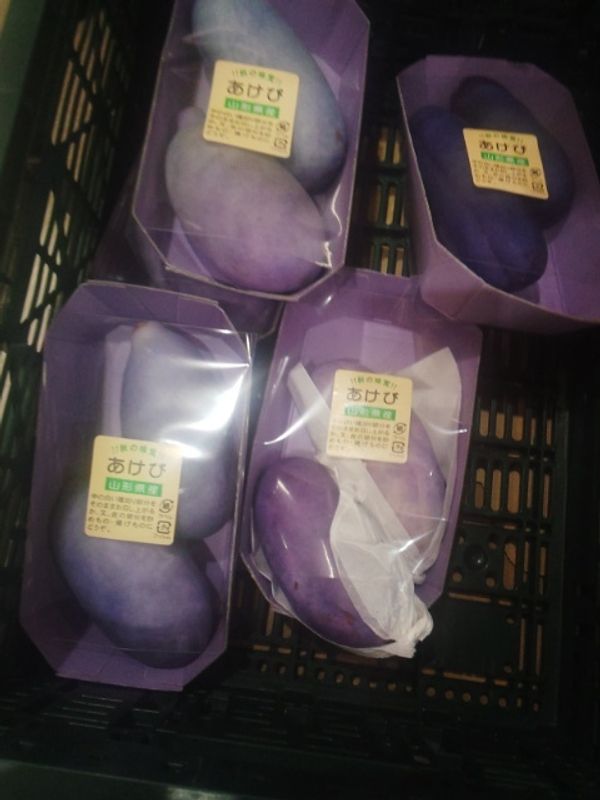
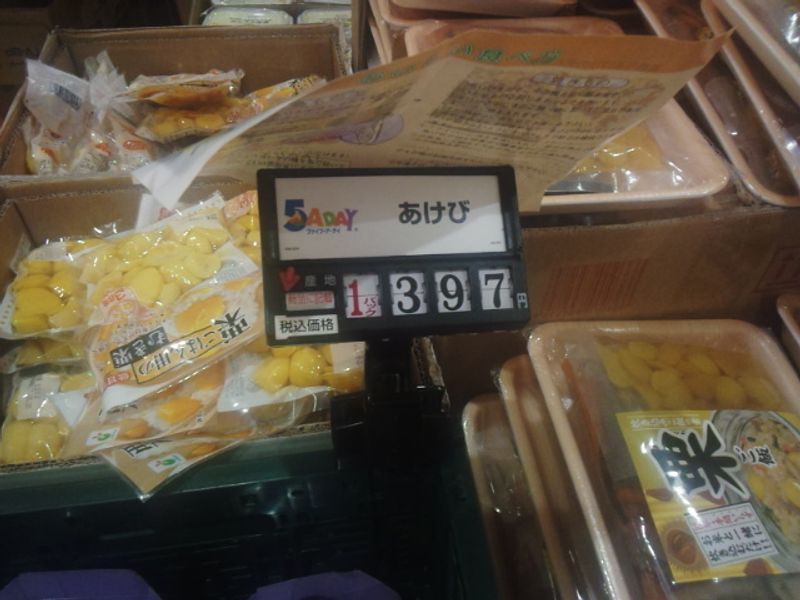
I didn't buy them on sight, assuming they were some weird kind of eggplant or sweet potato that I didn't have the culinary experience to know about. There is a lot of Japanese food that I can't name. This is not new, but when I saw the same weird thing at the Asaichi Market in Sendai, I decided to give it a try.
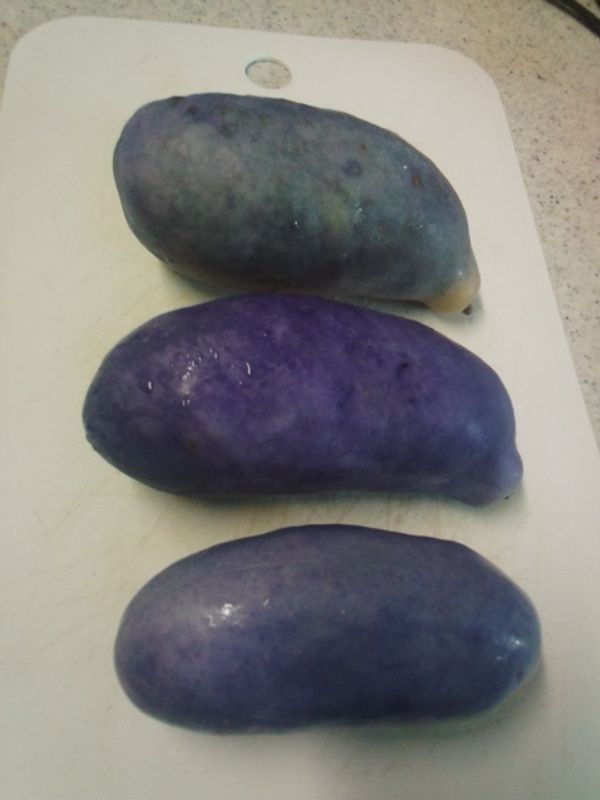
Akebi, known in English as Akebia or Chocolate Vine, is a wild vine plant native to the Tohoku region of northern Honshu. It's known for a lilac colored flowers and fruit. People here have been eating the plant for ages though it has only fairly recently caught on with some foodies in other areas. Unfortunately the fruit ripens and is available for only 2 weeks as summer shifts to autumn.
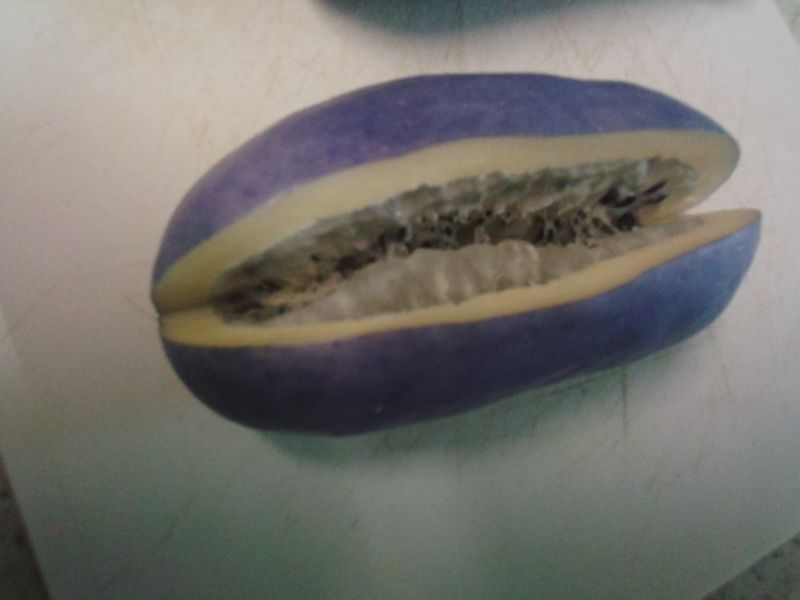
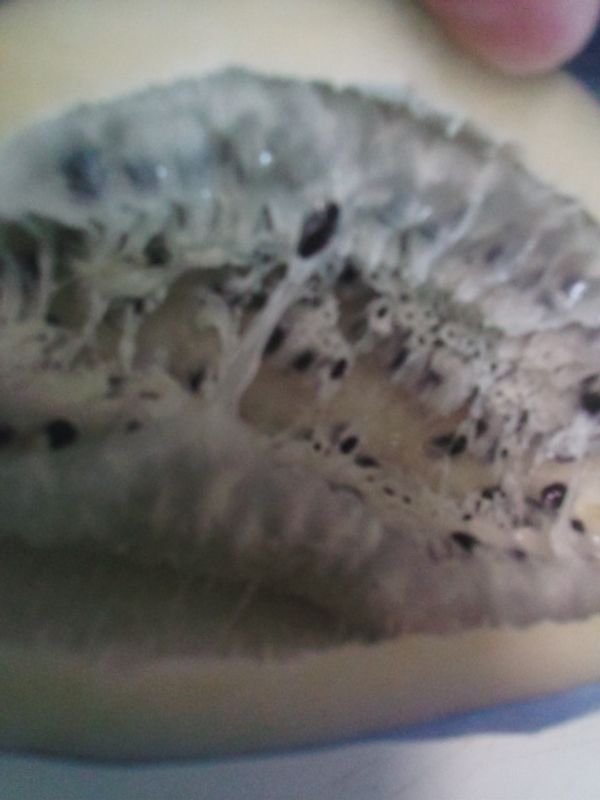
The outside is thick and bitter, and can be eaten if cooked like a vegetable. The inside is mildly sweet, gelatinous, white, and full of tiny black seeds. It can be eaten raw.
1. Raw (insides)
Some friends joined me to sample the strange fruit. First, we tried it raw. It is better to slice it open at the seam, which I didn't know when I hacked at this first one. Then you scoop out the insides with a spoon. It comes away easily enough.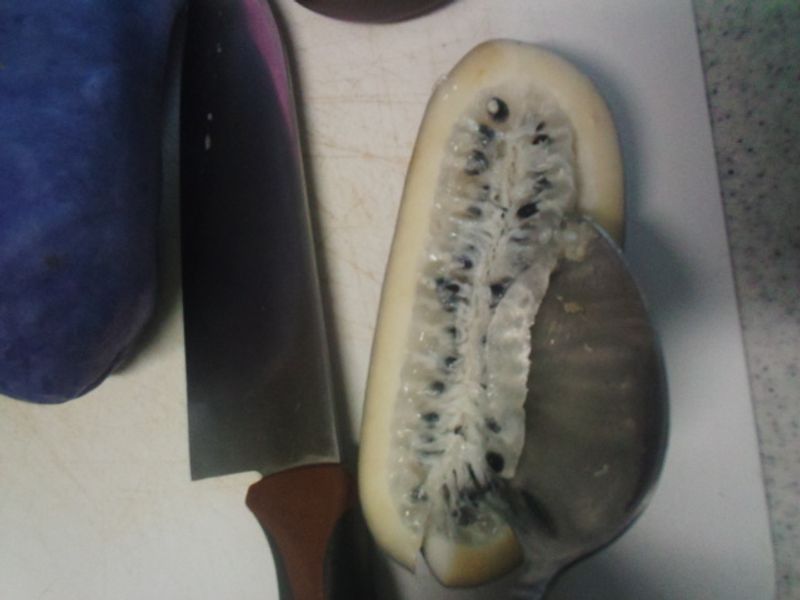

Our Assessment: Not Bad. Even the 11 year-old boy in our group found it tolerable. The flavor was very lightly sweet, and the texture was pretty gooey but still good. Not being a fan of the overly squishy-chewy texture of some Japanese food, I expected to hate it, but found it strangely enjoyable. One of our group even called the fruit addictive and likened it to lychee. The seeds are edible, and separating them from the meat takes ages. If you choose to leave them in, do not bite them. Even our bitter-loving comrade was unhappy with the results of that. Removing them also gives you something small and sticky to play with as you wait for your friend to cook the rest of the akeba.
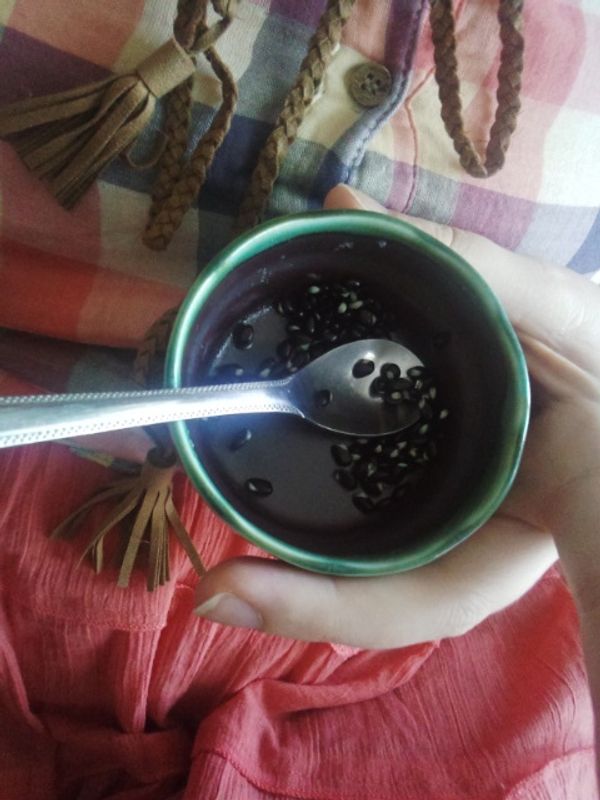
2. Grilled (outsides)
After the middle was done, we chose to slice and grill the outside of the akeba, with olive oil, salt and pepper. I cooked it in my toaster oven for around 8 minutes, though my slices may not have been fine enough to make this work.
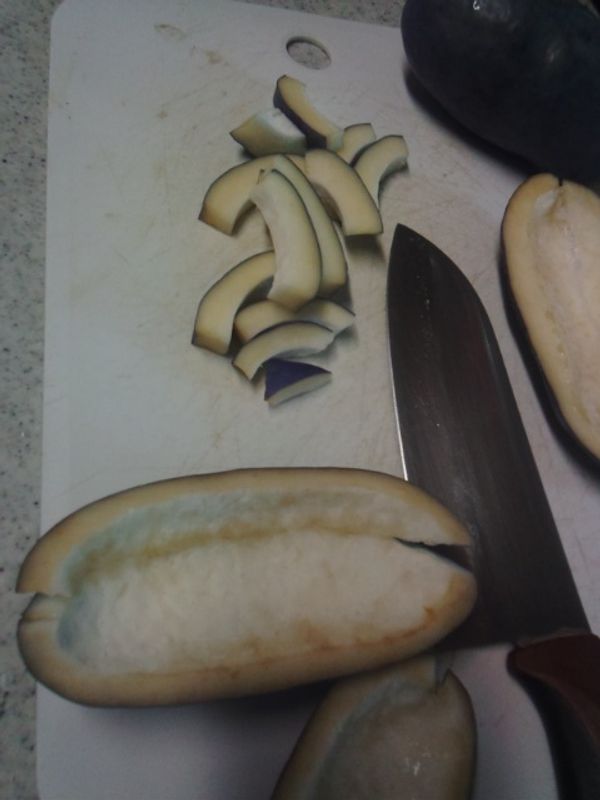
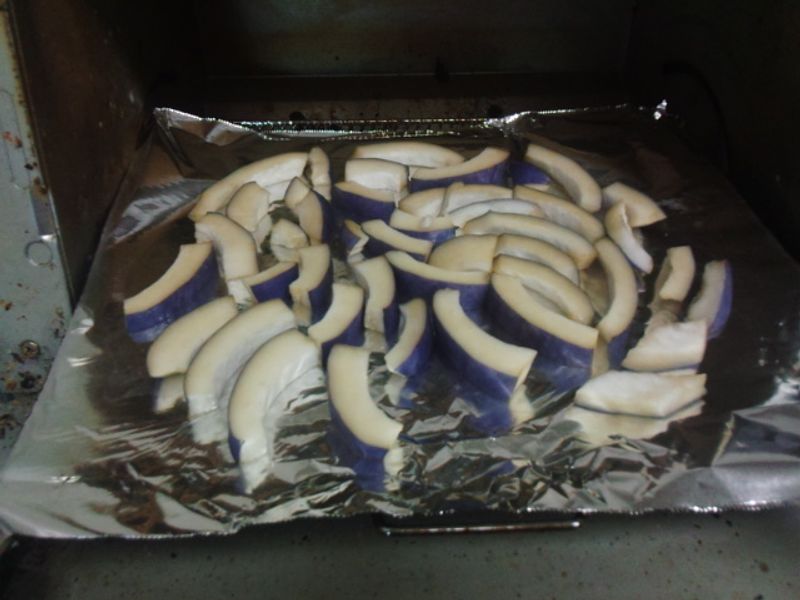
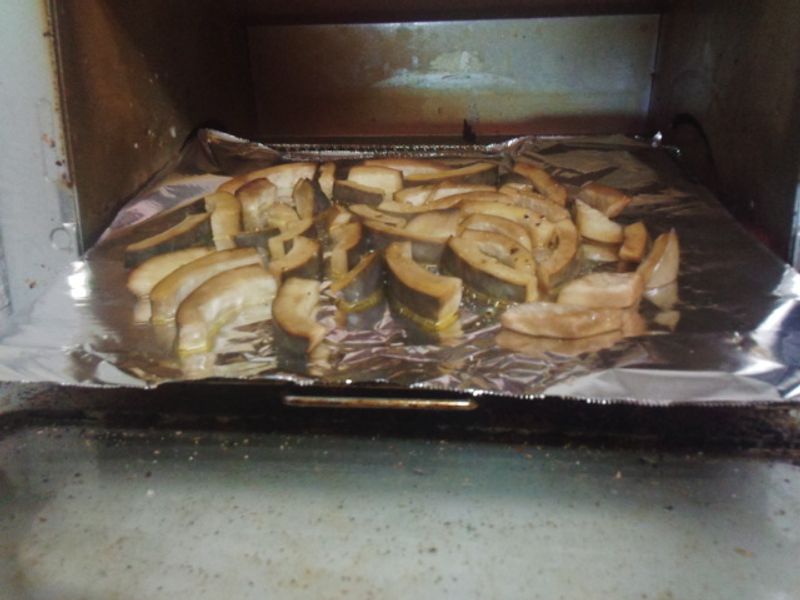
Our Assessment: Really bitter peel, okay meat. In the words of the 11 year old, "It almost killed me."
This is probably partially due to my inability to slice it thinly enough or cook it all the way through, though the pieces did seem nice and squishy. Note also that the color changes completely, dropping from a soft lilac to a grayish brown. Our bitter-lover said she liked it well enough.
3. Tempura (outsides)
Slice the body lengthwise before adding batter and/or breading.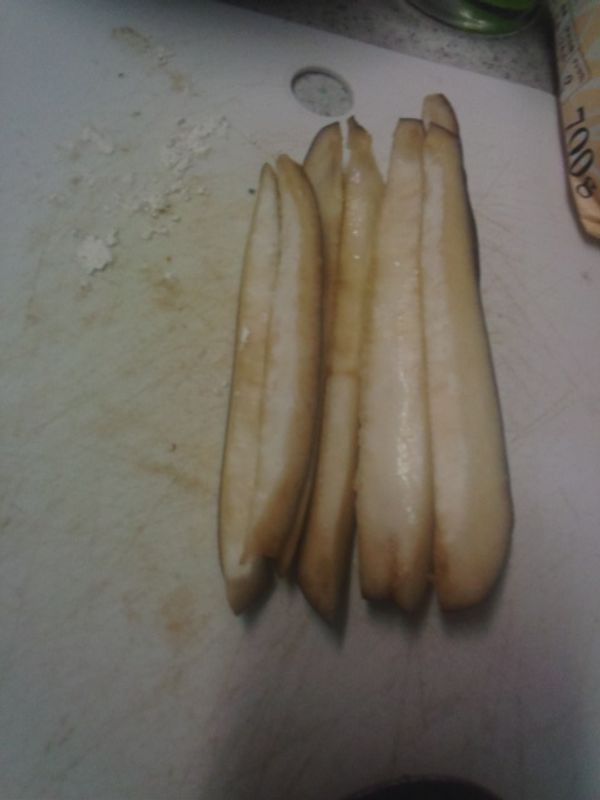
Before today, I had never cooked tempura, and my initial attempt failed so miserably that the three slivers I was working on had to be placed to the side while I washed the pan and let my more experienced friend take the lead. Remember to season the flour. We used an egg wash to help the flour stick. Without it, the flour falls off easily in the pan.
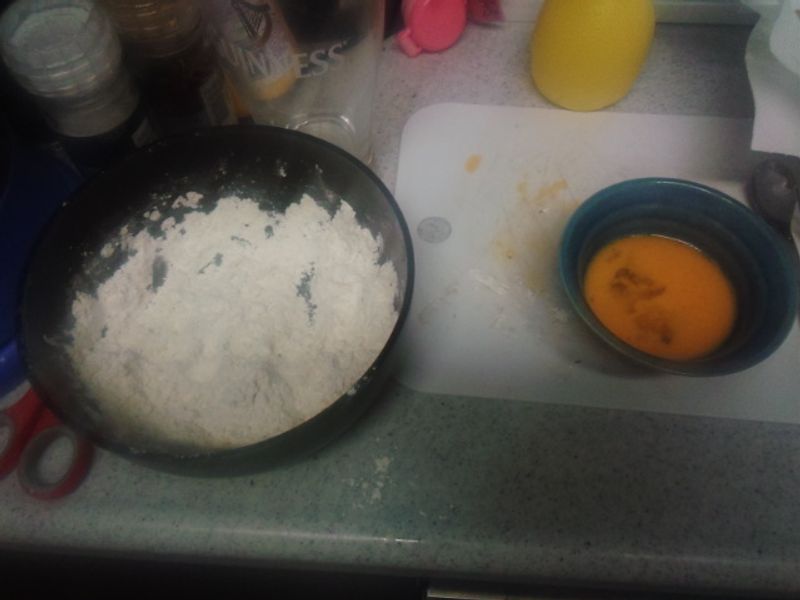
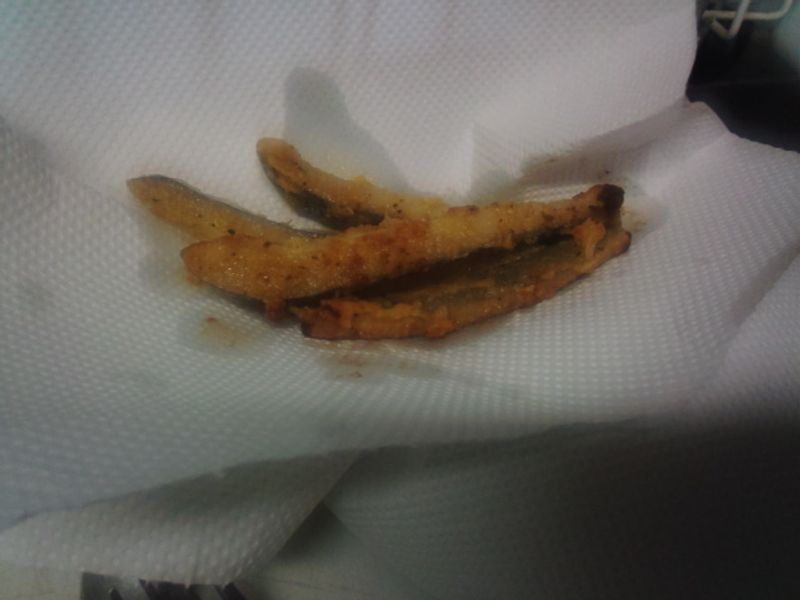
Our Assessment: Yummy! Everyone loved this one, provided the slices were thoroughly cooked. For this, it is recommended to use a bunch of oil and/or super-thin slices to get the desired effect. It was actually quite lovely, not entirely unlike a dry-inside version of fried okra.
4. Savory Pancake (outsides)
Not wanting to waste the egg wash, seasoned flour, or poorly-breaded slices, we combined all three well and with milk to form a savory pancake. Pan fried in a little oil, the pancake was ready in a few minutes.
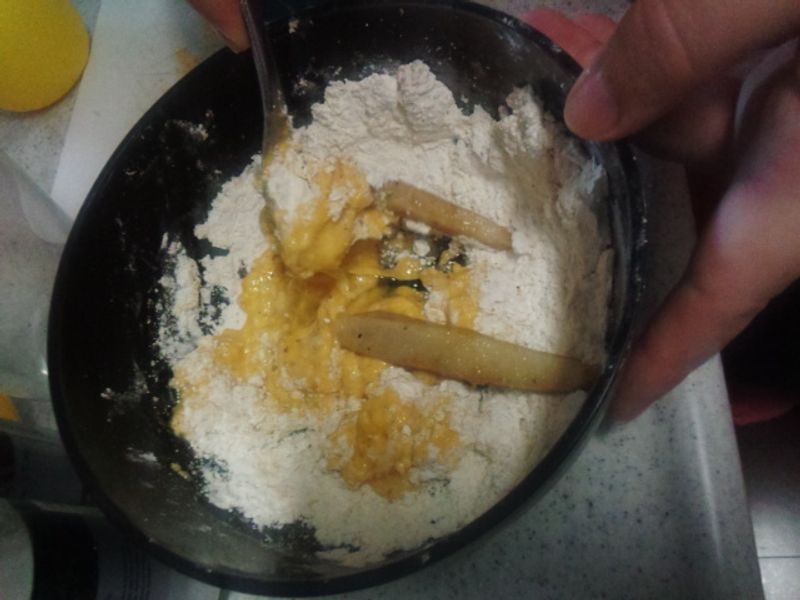
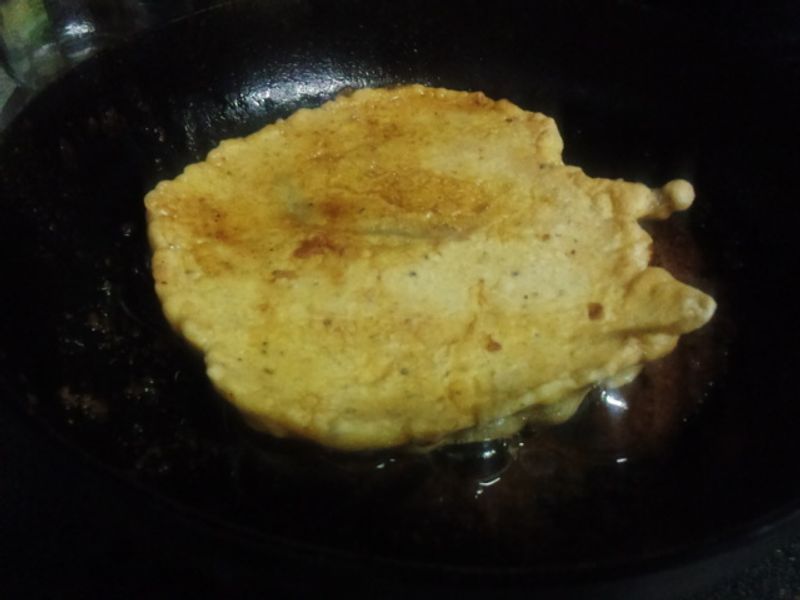
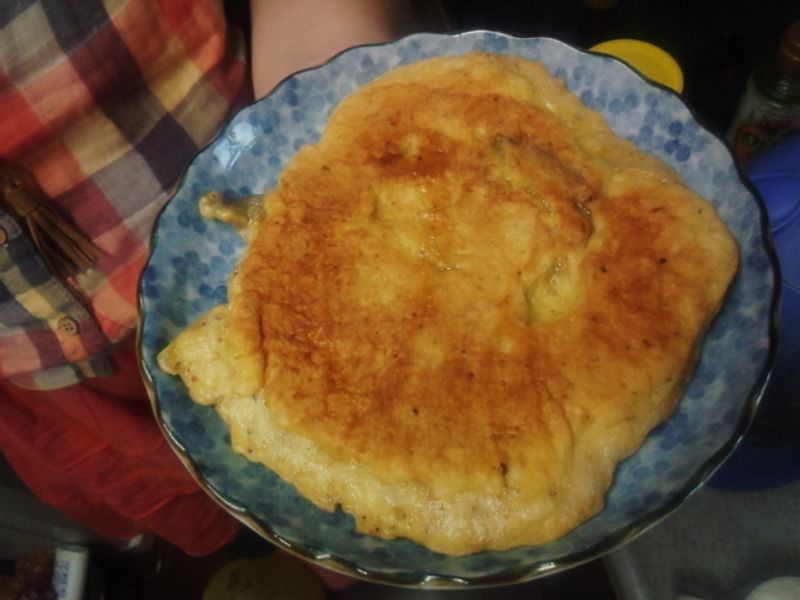
Our Assessment: Love it! Everyone enjoyed it, including a three-year-old who did not try any of the rest of the akebi dishes.
The one improvement we would suggest is cutting the slivers into smaller chunks so that they would spread more evenly through the pancake.
5. Tea (insides)
Having observed people making tea from jam by adding hot water and stirring, I wondered if perhaps the inside of the akebi could be useful in this way. Unfortunataly, adding hot water to the squishy mass does nothing and the resulting mixture tastes only of water.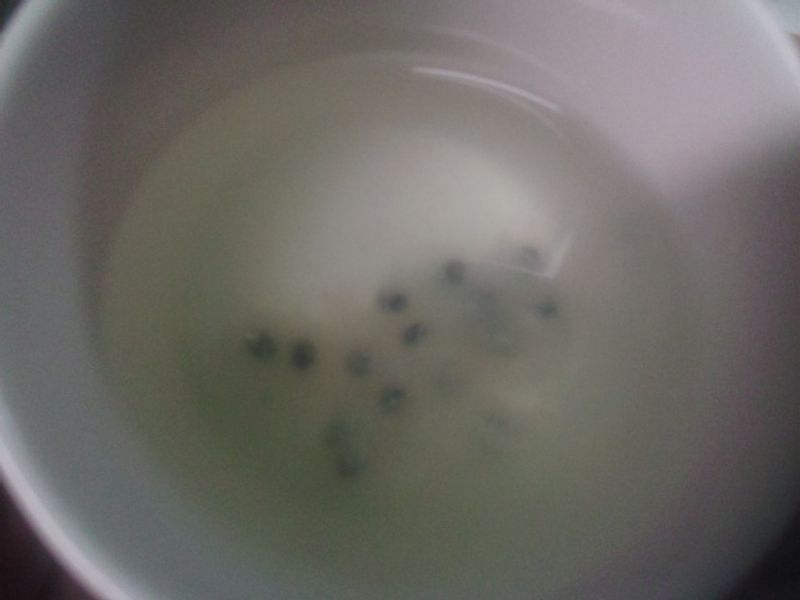
When we instead boiled a bit that had been frozen, we had a completely different reaction. The bits broke up easily in the hot water and with a little sugar added, the resulting beverage was an excellent "mild evening beverage" as the flavor of the meat was brought out into the water. Unfortunately, the resulting meat in the dregs of the cup comes out as "flavorless snot", so perhaps straining the tea-like beverage may be helpful in this manner.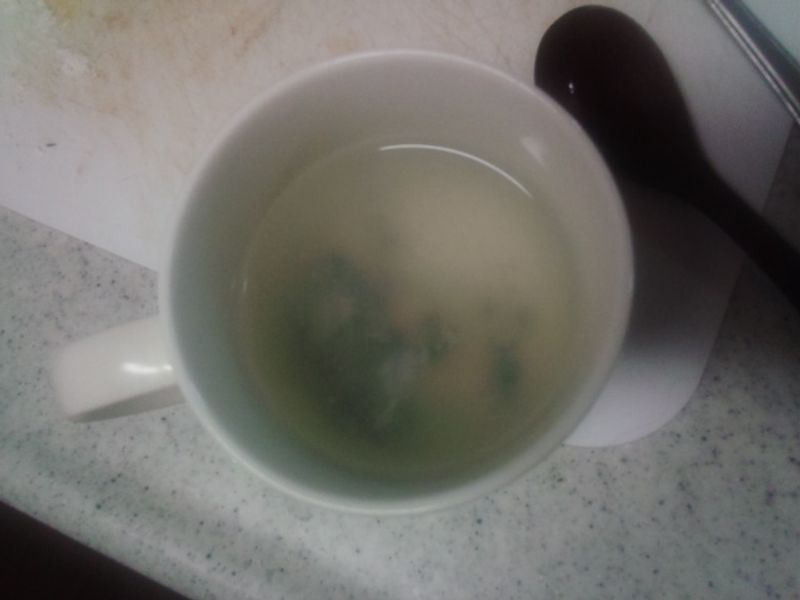
Our Assessment: Maybe, with sugar, if strained correctly.
6. Frozen (insides)
The squishy insides of one of our akebi fruit were stuffed into a heart-shaped ice cube mold, and the resulting treat was not only adorable
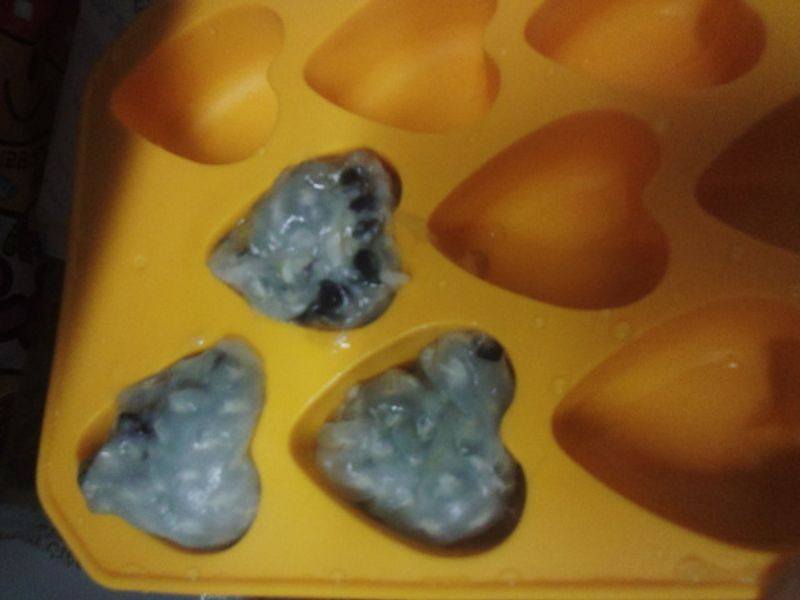
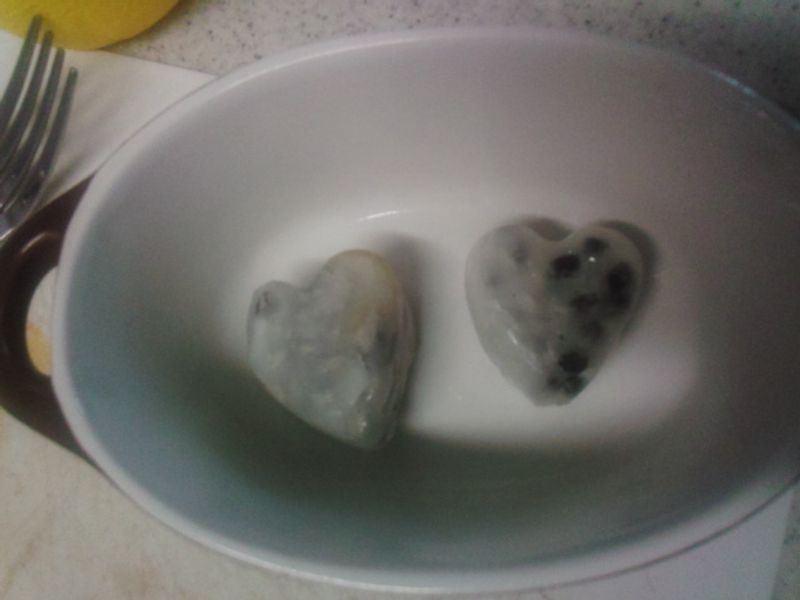
but delicious! The delicate flavor was amplified by freezing and the texture was improved as well.
Our Assessment: Fantastic! By far, this is the best way to eat the inside of the fruit. Of the three little hearts I attempted to make, only two were usable as the third was too big to freeze properly. Shallower portions would have improved this.
So, if you find akebi in your area and want to give it a try, we recommend tempura or savory pancakes for the outside and freezing the inside, preferably as shallow dollops in an adorable mold.



0 Comments